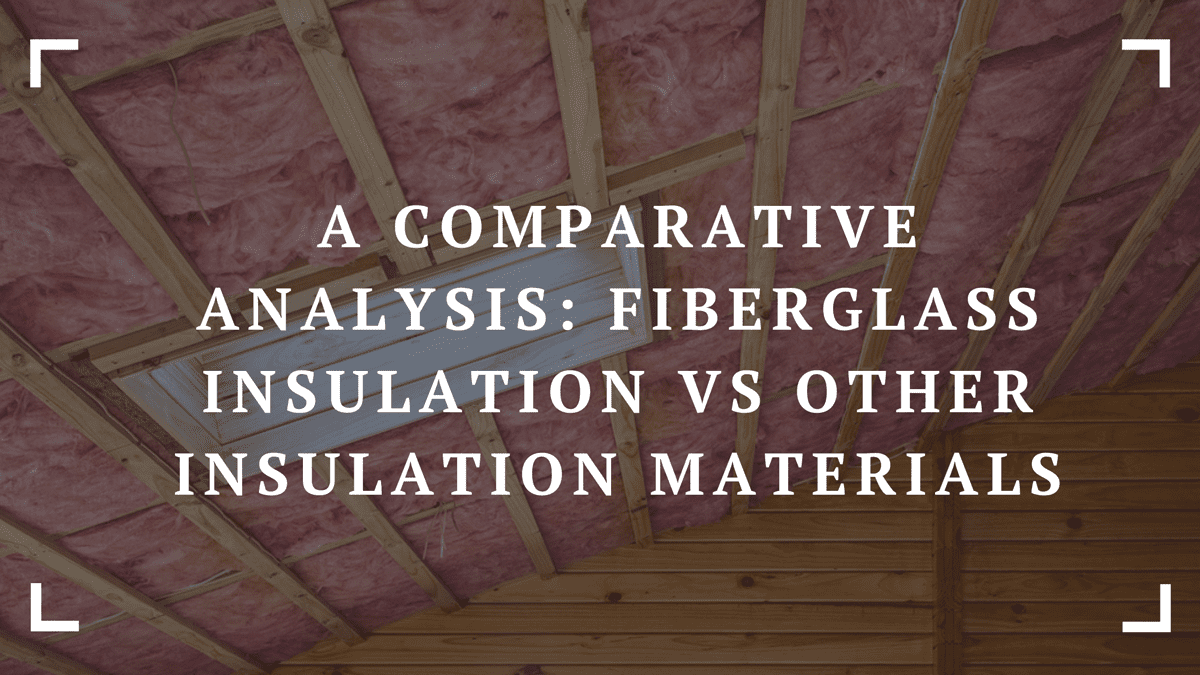So you are finally looking to make your home energy efficient and eco-friendly. Your wallet and the planet will thank you. But with so many options out there for insulation, how do you choose what is right for your needs? Fiberglass insulation is a popular choice, but should you consider other materials like cellulose, foam, or wool? Let’s dive in and explore other options.

Fiberglass Insulation
Fiberglass insulation is probably the most popular insulation material and for a good reason. It’s affordable, effective, and easy to install.
The major pros are cost and R-value.
It is the most budget-friendly option, and since it has a high R-value, it’s great at resisting heat flow and thus lowers your energy bills. But it does have some downsides you should consider.
Tiny fibers can get into your skin and eyes and cause irritation. It’s also not great at muffling sound, so you’ll get minimal noise blocking. Another downside is that fiberglass insulation typically contains formaldehyde, a known carcinogen, to help bond the fibers together.
Cellulose Insulation
Cellulose insulation is made from recycled paper and wood products, so it’s a great eco-friendly option. Compared to fiberglass, cellulose offers some advantages.
Cellulose does a better job of filling in small spaces, so it provides better coverage and insulation with fewer air pockets. It’s also highly fire-resistant since it’s treated with fire retardants, and it won’t irritate your skin like fiberglass can. However, cellulose insulation requires higher initial investment and may compress over time, reducing its effectiveness.
Cellulose insulation resists moisture well and won’t sag like fiberglass, but it still needs to be properly installed and ventilated to prevent dampness buildup. In humid areas, fiberglass may handle moisture slightly better.
Cellulose paper and wood fibers can attract pests like rodents or insects. Fiberglass insulation is less likely to attract pests. Cellulose insulation typically costs 20-50% more than fiberglass. Although it qualifies for many of the same rebates and tax incentives as fiberglass, the higher upfront cost can be a deterrent.
Mineral Wool and Spray Foam Insulation
Mineral wool, like rock wool or slag wool, is made from molten rock or slag spun into fibers. It comes in batt, boards, and loose fill. Mineral wool is fire-resistant, moisture-resistant, and sound-absorbing. However, it can be more expensive than fiberglass, and the loose fill type releases irritating fibers during installation.
Spray Polyurethane foam (SPF) is made by mixing isocyanate and polyol resins, expanding into foam and hardening into plastic. Closed-cell spray foam provides the highest R-value per inch but is the most expensive type of insulation. It seals and insulates, reducing air leakage. However, it requires professional installation, has potential health hazards from toxic fumes, and may shrink over time.
Open-cell spray foam is cheaper but less dense, so it provides less insulation. It’s still professionally installed but is less harmful to work with. Spray foams, especially closed cells, can be good for filling gaps and cracks in framing or sealing attics, basements, or crawl spaces. However, high cost often means it cannot be used to insulate an entire building.
Summarizing the above analysis in a table:
| Insulation Material | Fiberglass | Mineral Wool | Cellulose | Spray Foam |
|---|---|---|---|---|
| R-Value | 2.2 – 4.3 per inch | 2.6 – 4.0 per inch | 3.0 – 3.7 per inch | 6.0 – 10.0 per inch |
| Cost | Affordable | Slightly More Expensive than Fiberglass | More Expensive than Fiberglass | More Expensive than other insulation material |
| Ease of Installation | Easy | Easy | Easy | Difficult |
| Durable | Durable | Durable | Durable | |
| Fire Resistance | Good | Good | Good | Excellent |
| Environmental Impact | Low | Low | Low | High |
| Sound Proofing | Good | Good | Good | Poor |
| Moisture Resistance | Good | Good | Good | Excellent |
| Versatility | Versatile | Versatile | Not as Versatile | Not as Versatile |
Additionally, if you are looking to optimize insulation in your house using windows, this article may help you.
Wrapping up
Each of the insulations has its pros and cons. The type you choose depends on factors like your budget, installation needs, climate, and personal preferences. At the end of the day, any insulation is better than no insulation. Do your research, consult Professional Insulation Services, and go with what makes the most sense for your situation.


